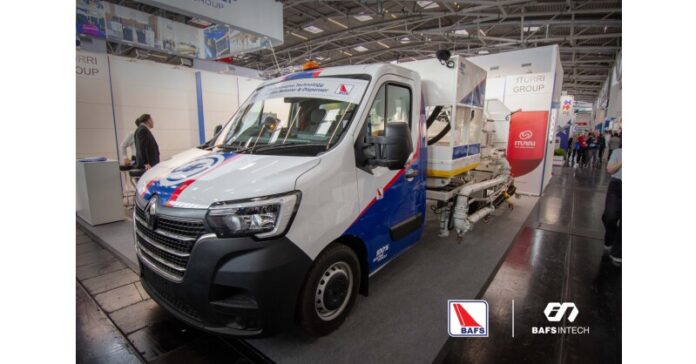SINGAPORE, Oct. 17, 2023 /PRNewswire/ — PARKROYAL COLLECTION Marina Bay, Singapore, celebrates an exceptional year with a series of international and local sustainability awards in the first three quarters of 2023.
Heads of Department at PARKROYAL COLLECTION Marina Bay, Singapore
These prestigious awards acknowledge PARKROYAL COLLECTION Marina Bay, Singapore’s unwavering commitment to excellence, innovation, and sustainable practices within the hospitality industry.
The year began on a high note with PARKROYAL COLLECTION Marina Bay, Singapore being honoured with the "Sustainable Hotel (Asia Pacific) 2022-2023 Award" at the International Hotel Awards 2022. This accolade is a testament to the hotel’s dedication to implementing sustainable practices across its operations. Additionally, the hotel clinched the "International Sustainable Awards 2023" at the Luxury Lifestyle Awards 2023.
Continuing its sustainability journey, PARKROYAL COLLECTION Marina Bay, Singapore was listed among the "Top Six Green MICE Venues" by Visit Singapore 2023. This recognition highlights the hotel’s commitment to providing eco-friendly event spaces, emphasising the hotel’s dedication to sustainable practices within the meetings and events industry. The hotel was also a finalist in the "Outstanding Achievement" in Sustainability 2023 category at the Singapore Tourism Award 2023, organised by the Singapore Tourism Board.
Further solidifying its position as a sustainability champion, PARKROYAL COLLECTION Marina Bay, Singapore was welcomed into the esteemed Green Collection 2023 by GHA DISCOVERY. This recognition underscores PARKROYAL COLLECTION Marina Bay, Singapore’s efforts to promote best green practices within the hospitality sector, setting an example for the industry.
Taking centre stage at the World Travel Awards 2023, the hotel was honoured with the prestigious title of "Asia’s Leading Green Hotel 2023". The hotel also received the esteemed "2023 GOGREEN Sustainable Development Pioneer Award" at the GOGREEN Awards 2023 by Bang Media, the hotel’s first award win in China.
The year’s achievements continued with the hotel securing Gold Medal in the "Best Sustainability Initiative 2023" Category at the Global NorthStar Stella Awards 2023. Organised by United States-based Northstar Meetings Group, PARKROYAL COLLECTION Marina Bay, Singapore is proud to be the sole recipient of this esteemed award in Southeast Asia. ‘PARKROYAL COLLECTION Marina Bay, Singapore leads the way in sustainability, and its recognition as a Gold Medal Stella Award winner in the important Best Sustainability Initiative category worldwide is well-deserved,’ said David Blansfield, Executive Vice President, Northstar Meetings Group. ‘The hotel’s measurable achievements speak for themselves, for example, over 51,000 tonnes of carbon emission prevented, and more than 360,000 plastic bottles no longer used, to name a few. Through innovative measures, such as rooftop solar panels, an Urban Farm, and other eco-friendly initiatives, they’re setting an inspiring example of what green hospitality can achieve.’
PARKROYAL COLLECTION Marina Bay, Singapore concluded the first three quarters of the year by defending its position as the "Best Sustainable Hotel – Asia Pacific" at the Travel Weekly Readers’ Choice Awards 2023 for the second year running, as well as winning the ‘Singapore Hotel Sustainability Award 2023-2024’ by the Singapore Hotel Association, an award which is supported by the Building and Construction Authority, National Environment Agency, PUB (Singapore’s National Water Agency), and the Singapore Tourism Board. The award’s comprehensive evaluation assessed the hotel’s performance in energy, water, plastic and waste management, community engagement, and guest and employee education. The submission included proof of the hotel’s green efforts, as well as proof of data and metrics recording and tracking.
PARKROYAL COLLECTION Marina Bay, Singapore initially achieved recognition in sustainability in 2021 when it was first awarded silver in the "Reducing Plastic Waste in the Environment" Category at the World Responsible Tourism Awards 2021. The hotel went on to win the "Sustainable Hotel of the Year 2022" by The ULTRAs and the "Global Green Model Building 2022 Award" by Sustainable Cities and Human Settlements Awards, an annual worldwide prize awarded by Global Forum on Human Settlements and supported by the United Nations Environment Programme.
These prestigious awards and accolades received throughout the year reflect PARKROYAL COLLECTION Marina Bay, Singapore’s unyielding dedication to sustainable practices, innovation, and guest satisfaction. As the hotel looks ahead, it remains committed to setting new standards in the hospitality industry and creating memorable experiences for guests, while preserving the planet.
At PARKROYAL COLLECTION Marina Bay, Singapore, eco-friendly practices are central to the hotel’s core functions, including its food supply resilience, energy and water consumption, plastic waste, food waste and general waste management.
The hotel also works to share many of its best practices and green innovations to help others become better environmental citizens. The hotel offers sustainable hotel building tours to members of the public, to showcase its green features, and to demonstrate how sustainability is practiced across the hotel’s operations. Tours are also offered to students with the goal to heighten awareness of the urgent need for climate action, and to "plant" sustainable seeds in young minds. Rather than simply explaining sustainability, the hotel provides a living example of how sustainability may be integrated seamlessly into a hotel’s operations.
While the management and Associates of PARKROYAL COLLECTION Marina Bay, Singapore take time to enjoy the hotel’s green achievements, the work is only the beginning. One of the driving principles of the hotel is to constantly find innovative ways to become greener and more sustainable, such as the upcoming launch of the hotel’s rainwater harvesting initiative in late 2023, all while providing a distinct and inspiring world-class guest experience.
In addition to its sustainability awards, PARKROYAL COLLECTION Marina Bay, Singapore has garnered various prestigious accolades that highlight its commitment to delivering exceptional guest experiences. Notably, the hotel was honoured the "Best City Hotel – Singapore 2023" at the TTG Asia Travel Awards 2023. This recognition underscores the hotel’s exceptional service and dedication to providing an unforgettable experience for guests. Furthermore, the hotel was recognised among the Top 100 Hotels & Resorts of the World 2022 by the Luxury Lifestyle Awards 2022. This esteemed distinction showcases the hotel’s status as a premier destination, offering world-class amenities and unparalleled luxury to its discerning guests.
Click here to view PARKROYAL COLLECTION Marina Bay, Singapore’s digital brochure.
Click here to view PARKROYAL COLLECTION Marina Bay, Singapore’s sustainability deck.
Please click here to retrieve more press materials.
This content was prepared by our news partner, Cision PR Newswire. The opinions and the content published on this page are the author’s own and do not necessarily reflect the views of Siam News Network










